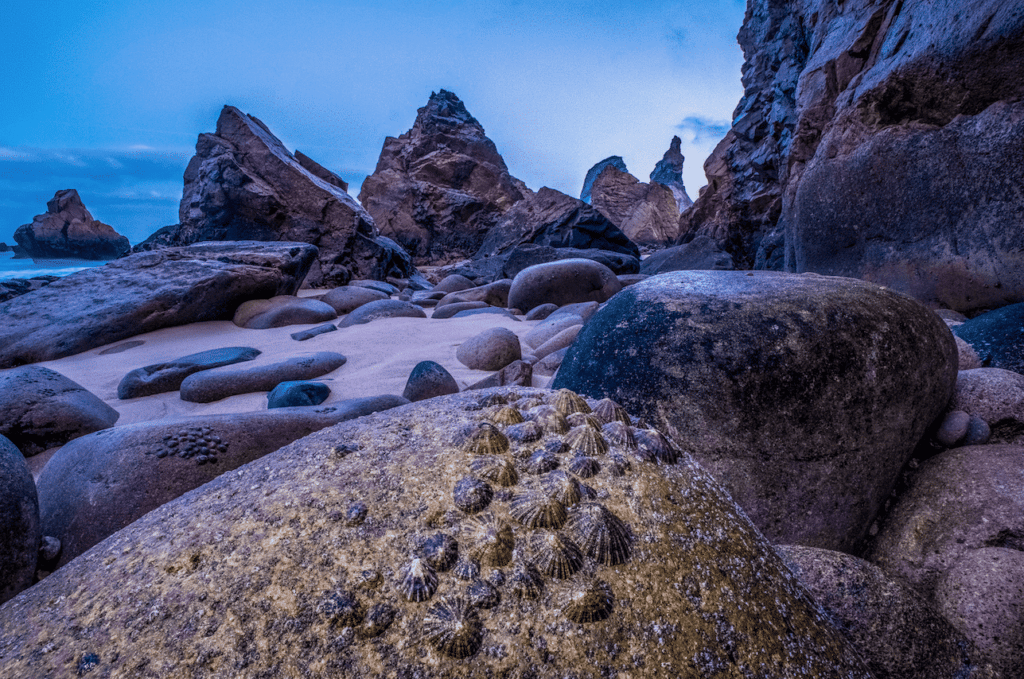
From lawyer to renowned wildlife photographer, Theo Bosboom made a drastic career switch years ago. His works have since been awarded titles such as Wildlife Photographer of the Year and The Silver Camera. Especially for MASTERS Gallery a small selection from his book: Shaped by the Sea.Text: Larissa Schaule Jullens
Image: Theo Bosboom
"For my photo book Shaped by the sea, I spent years scouring the Atlantic coast of Europe in search of spectacular and interesting beaches in all seasons and weather conditions. The desire to capture the power of the sea was one of my main motivations. As a photographer, I have a penchant for rugged nature and extreme weather conditions. Nothing worse than a cloudless, windless day with a tame sea! I much prefer stormy weather and rough seas with high waves. You feel then that you are alive and also how powerful nature is and how insignificant you are as a human being. I had the perfect storm photo in my head for a long time before I could finally actually take it: multiple layers of high waves one after the other, across the entire width of the photo, in beautiful lighting conditions. I finally found that combination of elements during a winter storm in Iceland. I had the wind at my back, it was dry, the sun was slowly sinking behind the waves, and the ocean was particularly rough that day. I took the picture with a big telephoto lens, because you have to be careful not to lose sight of your own safety in your enthusiasm. It was a great spectacle, but also beautiful and frightening at the same time. When I saw this photo on my screen later, I knew this was it: I had taken my perfect storm photo!"
"In a small tidal pool on an island in the Outer Hebrides in Scotland, I discovered pieces of colored seaweed floating in the water among the rocks. The seaweed probably got loose in a storm and was left in the little pool when the sea water receded. It seems like a subject of nothing and so I think most photographers would have walked past it. However, as a photographer, I tend to be very focused on the details of the landscape and was immediately intrigued by the shapes, lines and subtle colors. To put it like the American photographer Eliot Porter - known for his 'intimate landscapes': 'sometimes you can tell a large story with a tiny subject'. In retrospect, the photograph reminded me very much of the work of the painter Jackson Pollock. He produced some of his paintings by dripping paint in erratic strands - at large - onto canvases lying on the ground. As a nature photographer, I draw some of my inspiration from the work of painters. Unlike when you take inspiration from other people's photographs, you have much more freedom for your own interpretation."
"Photographers tend to value pictures they have worked hard for more than pictures taken - so to speak - out of a car window. The question is whether this is justified. After all, the audience does not know how much blood, sweat and tears went into making the photo. After all, it is looking to see if the image appeals or not. Yet that's how it works for me, too. And for this photo I worked extremely hard! During my Shaped by the sea photo project, along the Atlantic coast of Europe, I came across the shells you also see in this photo in several places. I later learned that they are sea snails, or even more precisely, scale horns. What I liked was that these creatures are often found in very photogenic places: on beautifully colored rocks in the intertidal zone, that is, right along the tidal edge, with sometimes steep cliffs in the background. On a trip to the west coast of Portugal, I found the perfect location for the photo I had in mind. A tricky beach, with a steep descent down an unmarked narrow path. Once down, it was savoring. A beautiful rugged spot, full of scale horns. Three mornings in a row I got up before dawn, drove to the beach and carefully descended in the dark with my photo gear. Finally, on the3rd morning, everything fell together nicely: a beautiful sky and enough time before the high water came up again. With a so-called wide-angle macro lens I was able to create the image, with the shell horns quite prominent in the picture and also the landscape around them."
Check out Theo Bosboom's website here.
© 2024 MASTERS EXPO. All rights reserved.